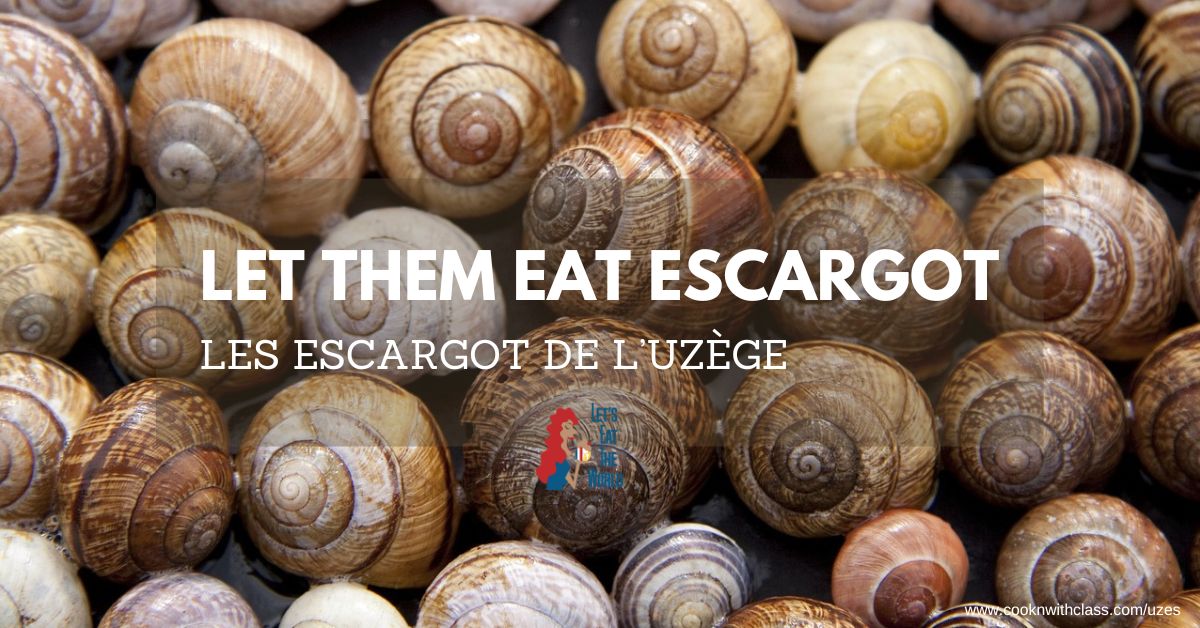
Let them Eat Escargot – Les Escargot de l’Uzège
When we were first contemplating moving to Uzès, we thought the smart thing to do would be to visit the city several times at different seasons to be sure that in Winter or in Summer we could still consider this place as home. So it was that we planned a trip before Christmas to partake in the Uzès Marché de Noël. It was at this market that our (then) 11-month-old son tasted his first escargot and not just any escargot but an escargot prepared by local snail farmer, Cyril Santos, with truffle butter. Feel free to be impressed because I certainly was. Our son’s appetite is a wonder to behold. I don’t know if either Eric or myself were quite so adventurous as children but we are clearly lucky foodie parents to have this kid in our lives.

Thanks to Remi’s appetite and our desire to get to know the local producers in a region we now call home, I sort out Mr. Santos to ask him if he wouldn’t mind granting me a little interview for our blog. This interview is the second in a series we hope to be able to do each month, bringing you closer to the people who are part of the richness of le Pays d’Uzège.
Heliciculture is the term given for the raising and the farming of snails
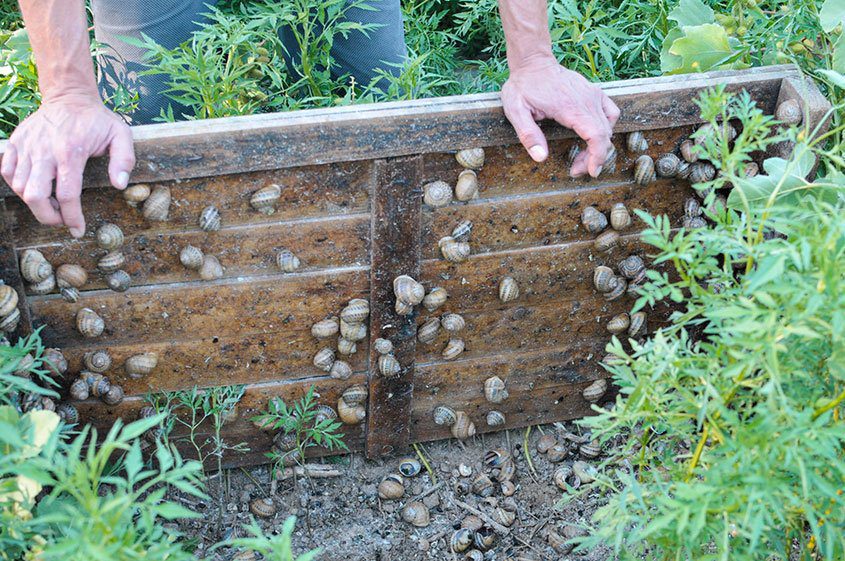
People have been eating snails for centuries and not just in Europe. In France, snails were considered a food of the elite and many chateaux in France had their own snail farms to deal with the high demand of this delicacy by its patrons. France remains the highest consumer of snails in the world and its role in French gastronomy is just as important as foie gras or cheese in French cuisine.

Helping to preserve this tradition at one of the 200 or so snail farms of France, is local enfant du pays, Cyril Santos. He has been a snail farmer since 2005 and in 2014 Les Escargot de l’Uzèges received the award “Miltant du Goût” for the Gard department which essentially means that he is one of the impressive people around these parts who is making sure the tradition of fantastic food – made with passion and with the finest ingredients, remains intact.
Every story has a beginning and Cyril’s is no different. There was a before escargot and I asked him to tell us a bit about how he came into this fascinating line of work.
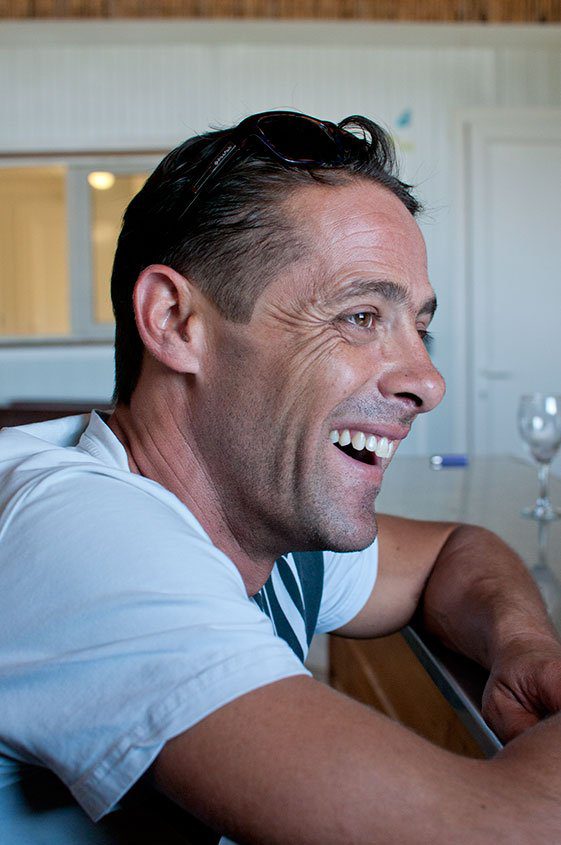
What did you do before raising escargot?
I did plenty of things including working at the town hall as well as quite a bit of work in the restaurant industry among many other small jobs.
Why escargot?
Well originally the plan was to start a business with a friend, boarding horses and proposing horseback riding excursions around the Pont du Gard. At that time horse boarding was not considered as an agricultural activity so I starting looking for some financial assistance in the agricultural industry so that we could develop our business. We heard about escargot and became really interested in this activity. I did a 6-month training with a snail farmer to learn the craft. [When] my partnership with my friend did not work out, he kept the horses and I kept the snails.
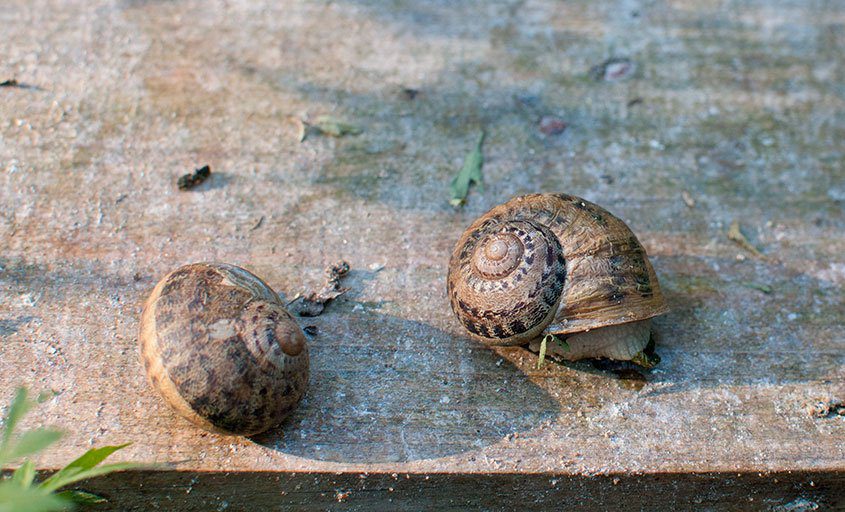
Raising livestock of any kind is by no means an easy job. The long hours involved in being a producer can sometimes play havoc on ones social life. So, though my next question to the 40-year old Heliciculturalist (snail farmer), may have seemed a bit “coquin” (cheeky), as the French say, and certainly got me a few chuckles from both Cyril and his friends, it seemed like an interesting question to ask all the same. I asked him when he planned on participating in “L’Amour est dans les Prés” (Love is in the fields) – A recent popular reality show much like the bachelor in its conception. Single farmers and producers have the opportunity to meet the woman or man or his or her dreams in the hopes of building a long-lasting future together. His answer was
“Um, never” which made his friends laugh even more. Does that mean that you are not single, I asked, to which he replied, “I am single but I do not want to participate in that show.”
Putting our humorous parenthesis aside, I continued with the rest of my interview questions and was grateful that he did not find me too cheeky to want to continue.
In a time when it seems as if small businesses are suffocating under the pressure of larger corporations I asked him, why choose sales directly from producer to consumer rather than working with a large distributor?
“Firstly due to the size of my production”, he said. “I would not have enough to work with a large distributor but also because doing what you do feels more worthwhile when you’re selling directly to your consumers. Your individual work or product has more value more so than it could when you are passing by a large distributor.”
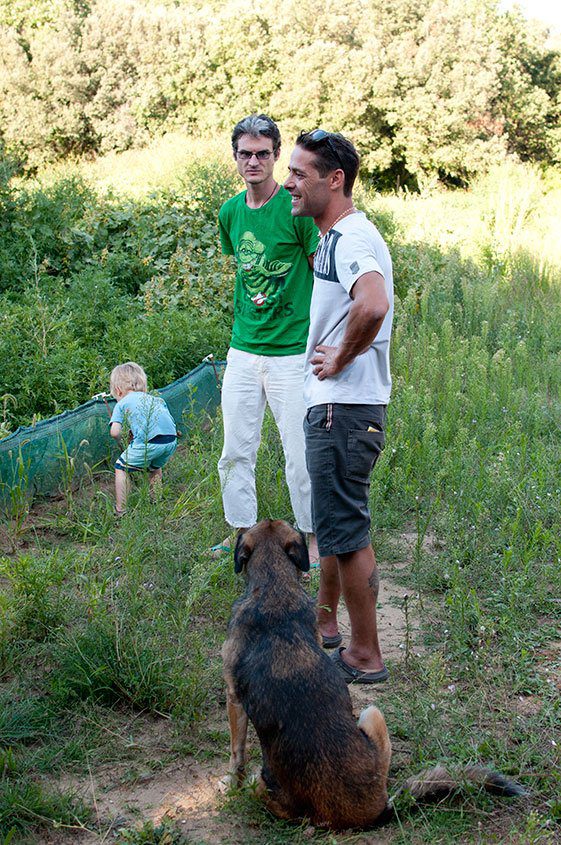
Cyril does not breed snails so every May he purchases baby snails from a breeder and introduces them into the boxes to fatten them up. When all has gone according to plan, by September they are ready to be collected.
“I introduced about 400 050 in boxed off areas and I collected about 4 tons from those,” he tells me.
It is said that there is about, on average, a 40% mortality rate in snail farms and a 4-ton yield is pretty good average for this size farm.
I assume snails eat leaves. I hold them partly responsible for the holes in the leaves of my vegetable garden but I wondered what farm raised snails are fed. The snails on Cyril’s farm eat the vegetation he plants in their boxes, notably colza (rapeseed) but they are also raised on a supplement of wheat, crushed corn, and barley.
Of course, as you may imagine there are many steps in between. Cyril is both respectful of the seasonality of his production as well as the life-cycle of his snails. No step can be skipped if he wants to ensure the quality of his product.
We have all seen snails of various sizes, what determines their adult size is their species. At les Escargot d’Uzèges, you will find “les gros gris” snails (Helix aspersa maxima) which are the most logical snails to have if you want to have edible snails that are similar in size to the snails of Burgundy. They weigh about 20g each. Once the snails have reached maturity they are ready to be collected. This is done over a period of about a month. And he is not afraid to involve his family in the collecting to help things along.
Once collected and placed into netted bags, they are made to fast for about 10 days. “In the kitchen, we carefully remove them from their shells and we blanch them,” he says. They need to be frozen at this point. When ready to use they are then cooked in a court bouillon according to whatever recipe we are preparing. Escargot is one of the exceptions where they are still considered fresh because we are still cooking them once they have been defrosted.
So by now, you are wondering where you can find Cyril and his delicious snails – or at least you should be. Cyril is at the Wednesday and Saturday markets in Uzès. In the Winter you will find him in Nîmes at the marché Jean Jaurès (on Fridays) and of course at the occasional festivals and fêtes de village. He usually puts on his website where he’ll be in the coming weeks.
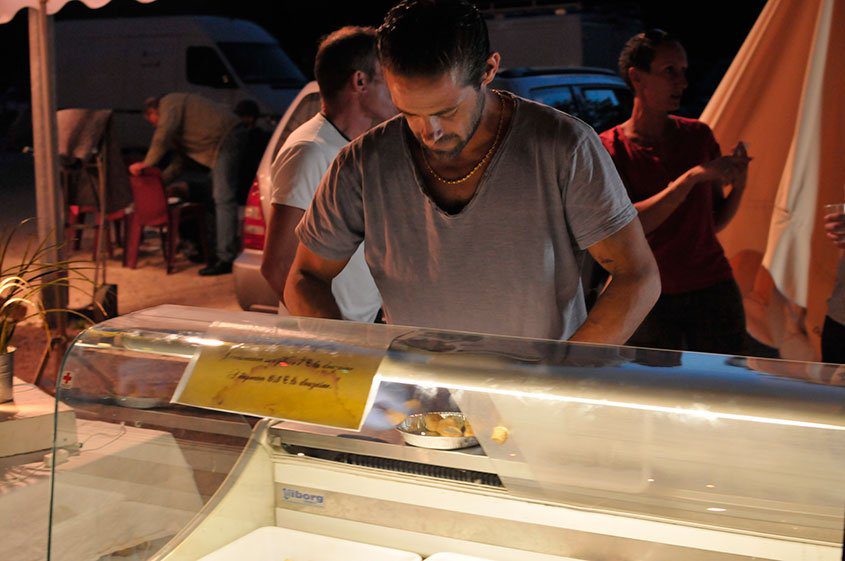
In the Summer, Cyril hosts several restaurant nights at his farm with the help of a few friends.
“We used to have a stand during the Feria de Nîmes for 5 years and we stopped doing it but wanted to continue the idea [closer to home] and so developed the restaurant here at home with the same concept. It was not too difficult considering that I already had space and the kitchen where I was already preparing my snails. I buy what is prepared in the restaurant from local producers.”
Now as a tourist you may be a bit shy and not want to whip out your high school French when you cross Cyril at a market or if you should be inclined (and you should be), to call and reserve a table at his pop-up restaurant in the Summer. But have no fear our snail guy tells me he speaks a little English. Cyril tells me he lived in London for short period of time – truly the image of the modern French farmer if I do say so myself.
Our Week in Uzès students who visit us in the Fall, have the opportunity to visit Cyril’s farm for a first-hand look at raising and cooking escargot.
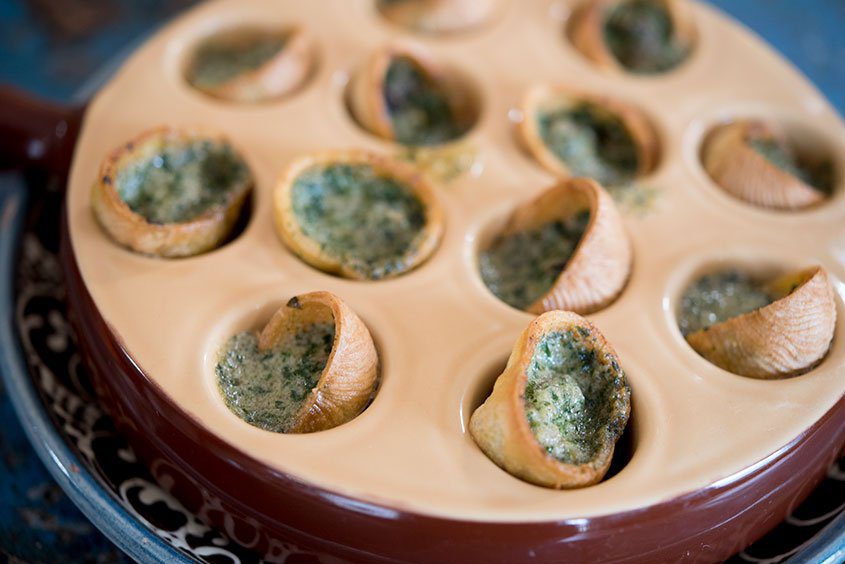
So next time you see Cyril at the market or at a fête de village, be sure to walk up to him and not just say hi but get yourself a dozen of those yummy snails and enjoy.
COOKING SNAILS
If you are lucky enough to live close to a snail farm where you can get your hands on some frozen ones, I found this little recipe for Escargot à la Bourguignonne courtesy of Larousse as Escargot is not something that chef Eric has done since his school days. Scroll down to French it up in your kitchen and start cooking your own escargots!
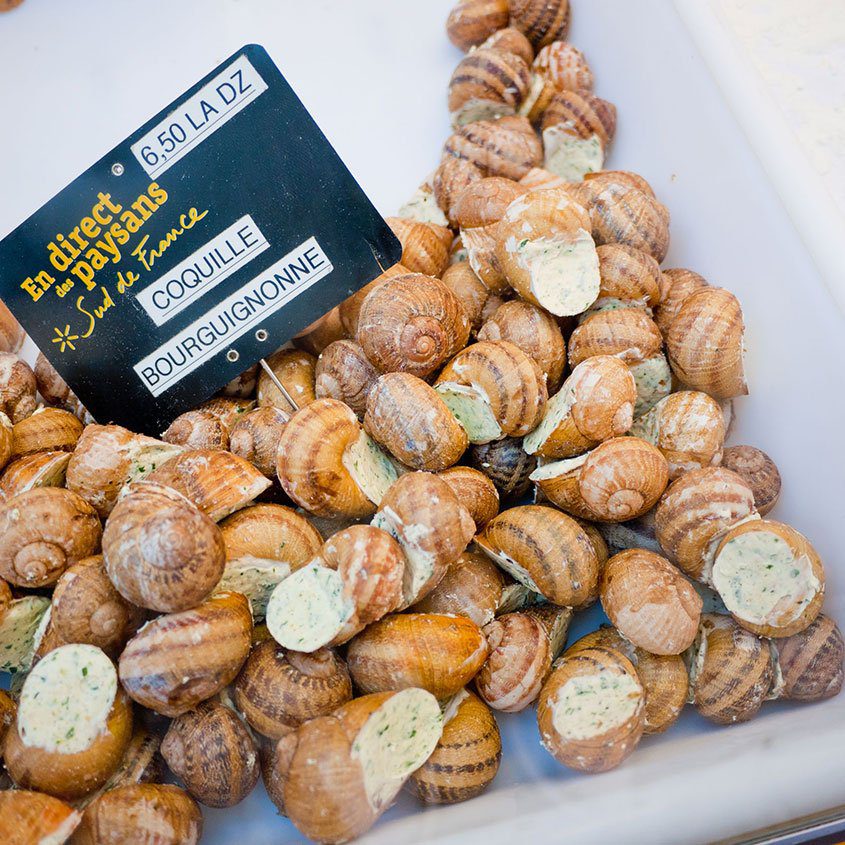
For more adventures in cooking in France, join us for a French cooking class in Uzès.
Pin this post:

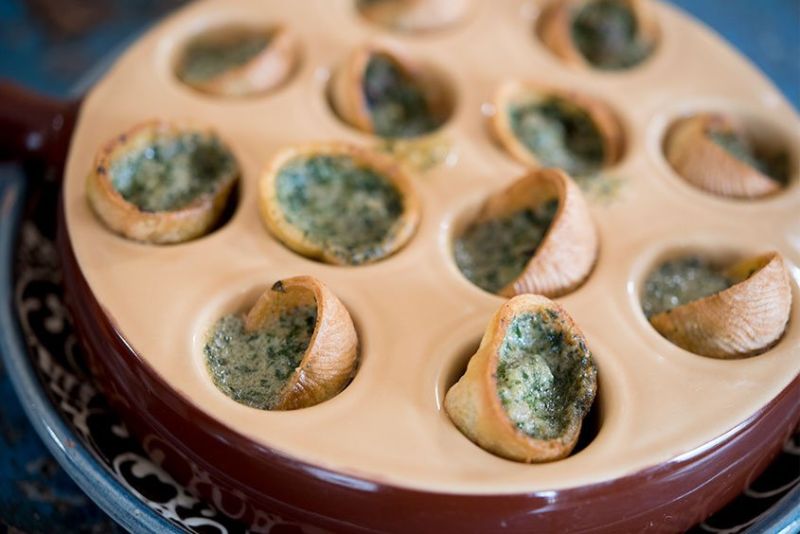
Escargots à la Bourguignonne from Larousse
Ingredients
- 48 Escargots defrosted if frozen or canned, (if fresh is not available)
- 400 Grams Butter 14oz
- 3 Shallots
- 1 Clove Garlic
- 1 Bunch Parsley
- Freshly Ground Pepper to taste
Instructions
- Cut the butter into small pieces, and place them into a dish to let them soften at room temperature for about 1 hour.
- Rinse the snails in cold water and drain them in a colander. Place them on paper towel and dry completely.
- Peel and finely chop the shallots and the garlic clove. Wash the parsley, dry them and pluck the leaves. Chop them finely.
- Start to work the butter with a wooden spoon till you obtain a pomade, then incorporate the shallots, garlic and chopped parsley. Add salt and pepper and continue to mix until the mixture is homogenous.4. Preheat the oven to 240ºC (about 450ºF).
- Butter the inside the snail shells, then put in your snail flesh and top with the composed butter making sure that it well filled and even at the top.
- Place each escargot into the escargot mold with the opening upwards.
- When your oven has reached the desired temperature, turn it off and place the escargot into the oven for about 5-10 minutes until the butter is bubbling and foamy.
Recipe Source: Larousse

